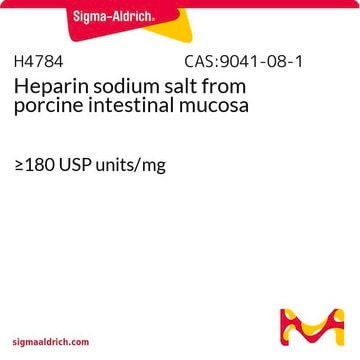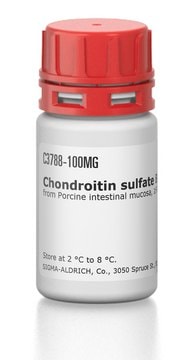The solubility of this item is 1mg/ml as mentioned on the COA.
Link to sample COA: https://www.sigmaaldrich.com/certificates/sapfs/PROD/sap/certificate_pdfs/COFA/Q14/H7640-5MG0000336127.pdf
H7640
Heparan sulfate sodium salt from bovine kidney
powder, extracellular matrix component
Synonym(s):
Heparitin sulfate sodium salt
Select a Size
Select a Size
About This Item
Recommended Products
Looking for similar products? Visit Product Comparison Guide
Application
Biochem/physiol Actions
Storage Class Code
11 - Combustible Solids
WGK
WGK 3
Flash Point(F)
Not applicable
Flash Point(C)
Not applicable
Personal Protective Equipment
Choose from one of the most recent versions:
Certificates of Analysis (COA)
Don't see the Right Version?
If you require a particular version, you can look up a specific certificate by the Lot or Batch number.
Already Own This Product?
Find documentation for the products that you have recently purchased in the Document Library.
Customers Also Viewed
Articles
Uncover more about glycosaminoglycans and proteoglycans including the structure of glycosaminoglycans (GAGs), the different types of GAGs, and their functions.
Glycosaminoglycans are large linear polysaccharides constructed of repeating disaccharide units.
-
What solvent should i use to dissolve this?
1 answer-
Helpful?
-
-
Wo finde ich eine Angabe zum Molekulargewicht?
1 answer-
The molecular weight of this product is not determined. However, data from collective articles suggests the molecular weight could be around 14000 Da.
Helpful?
-
Active Filters
Our team of scientists has experience in all areas of research including Life Science, Material Science, Chemical Synthesis, Chromatography, Analytical and many others.
Contact Technical Service









